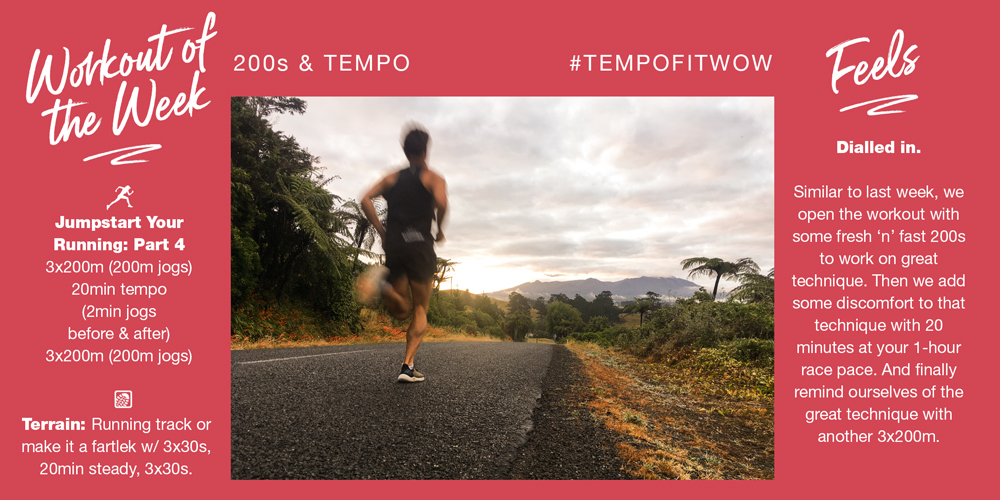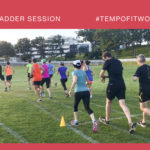
Have you ever approached a run like you would, say, practising the piano or learning to swing a golf club?
This workout is designed a lot like that—teaching you to smoothly and quickly … even when a little tired.
WHAT
- 3x200m @ repetition pace (200m jog recoveries)
- 20min Tempo Run @ lactate threshold pace (2min jog before and after)
- 3x200m @ repetition pace (200m jog recoveries)
Terrain: Running track (or you could do it as a fartlek with 3x30secs strides either side of the 20-minute tempo).
Feels: Dialled in.
Similar to last week, we open the workout with some fresh’n’fast 200s to work on great technique. Then we add some discomfort to that technique with 20 minutes at your 1-hour race pace. And finally remind ourselves of the great technique with another 3x200m.
WHY
Throughout January we’ve been teaching our bodies (and minds!) to become comfortable with running fast. Sub-max 200s are one of the best ways to do this.
And one of the best ways to test this new-found fondness of fast is to run at the niggling lactate threshold pace (the pace you can sustain for 60-minutes max) of the 20-minute tempo run.
HOW
Remember that repetition pace is what you can hold for 5 minutes flat out (so is not a sprint but is fast) and lactate threshold is what you can hold for 60 minutes flat out (so somewhere between or around your 10k and half marathon pace).
To calculate the exact paces, enter a recent or estimated race time to our TempoFit.org calculator.
SHOULD I STRETCH?
This is one of the most common questions I’m asked as a running coach. And is something extremely over-emphasised in the mainstream media. But let’s explore what the research is saying:
STRETCHING BEFORE A RUN:
The research is clear that static stretching before running is NOT good. Leaning against a fence or holding your heel to your butt won’t help reduce injury. In fact it can increase your injury risks and hamper performance. Instead, before a run we should warm our bodies with mild exercise like walking, slow jogging and dynamic stretches (e.g. leg swings and ankle circles).
STRETCHING AFTER A RUN:
Static stretching after a run is another story. Although not overwhelming, the research suggests there may be some benefit by static stretching after a run.
But what is clear is that there is such a thing as stretching too much and stretching too little. People with very poor flexibility tend to get injured more. But similarly people with too much flexibility tend to get injured more as well. So there’s a sweet spot somewhere in the middle.
And this sweet spot emphasises the need to make sure that we take a holistic approach to our stretching. Sure, flexibility might be a good thing, but it’s only a good thing if we are controlled through that range of motion and that it represents functional range of motion. And this emphasises the need to pair that stretching with strength work and coordination exercises like drills and plyometrics.
So, by all means, do your weekly yoga class, but remember that as you become more mobile you won’t to make sure that you couple that newly gained mobility with strength through that range of motion.
Podcast (workout-of-the-week): Play in new window | Download
Subscribe: Apple Podcasts | RSS | More



